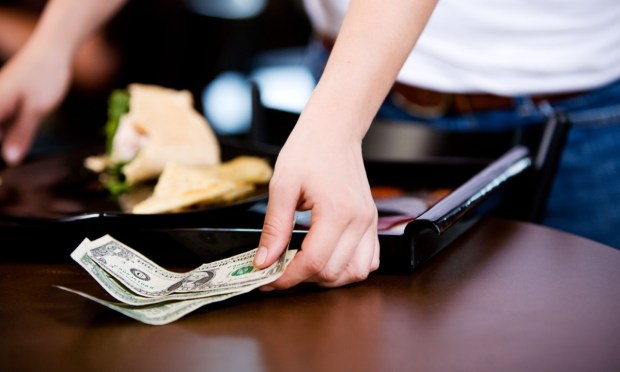More Restaurant Consumers Now Skip the Tip

As economic pressures prompt consumers to rethink their spending, diners are becoming more stingy with tips.
Research from PYMNTS’ study “Connected Dining: Inflationary Pressure Squeezes Restaurant Tips,” which draws from a survey of more than 2,200 U.S. consumers, finds that 39% of consumers have been tipping less at restaurants in recent months.
Moreover, restaurants’ most frequent customers are cutting back the most. A whopping 58% of those who make restaurant purchases at least three times a week have reduced their tipping, as have 40% of those who dine out once or twice a week.
It seems that these changes are linked to consumers’ challenges in the face of inflationary pressures and the looming threat of a recession, given that those with the tightest budgets are the most likely to cut back. The study found that the majority (52%) of those who live paycheck to paycheck with issues paying bills have been tipping less, compared to only 24% of those who do not live paycheck to paycheck.
These concerns are having an effect on consumers’ restaurant habits. For instance, The One Group, parent of STK and Kona Grill, noted on an earnings call last month that it is seeing diners pull back on weekday spending.
“Probably the only noticeable factor I see today different from maybe six months ago is perhaps the build of the business Monday through Sunday. I do think that the weekends are super robust,” CEO Manny Hilario told analysts. “Mondays through Wednesday, I do think that, if there’s a place where the consumer might be making more decisions about going out or not, it’s on those days of the week.”
In fact, consumers are making food spending decisions based on whether they will feel the pressure to tip. According to data from PYMNTS’ study, “Connected Dining: Rising Costs Push Consumers Toward Pickup,” which drew from a survey of more than 2,100 U.S. consumers in January, 54% of consumers who order from restaurants for off-premises consumption said they would be more inclined to order delivery for their next meal if the delivery person were not allowed to take tips.
These pressures are especially acute because of how tipping expectations have increased. It is not only in delivery and full-service dining that consumers now feel the pressure, as Kickfin Co-CEO Brian Hassan told PYMNTS in an interview for the March editions of the Money Mobility Tracker®, Inflation Makes Technology Table Stakes for Restaurants, created in collaboration with Ingo Money.
“The total addressable market of digital tipping … has grown in multiples,” Hassan said. “What used to be only in full service is now in full service, quick service, airports, stadiums, personal services and the list goes on. It touches our lives every day and almost every transaction we might encounter outside of retail.”
This expectation could be prompting consumers to skip some purchases altogether. The Connected Dining study found that, of those who are tipping less than they used to, 58% say the expectation to leave a tip makes them eat at home more frequently instead of dining at a restaurant.

